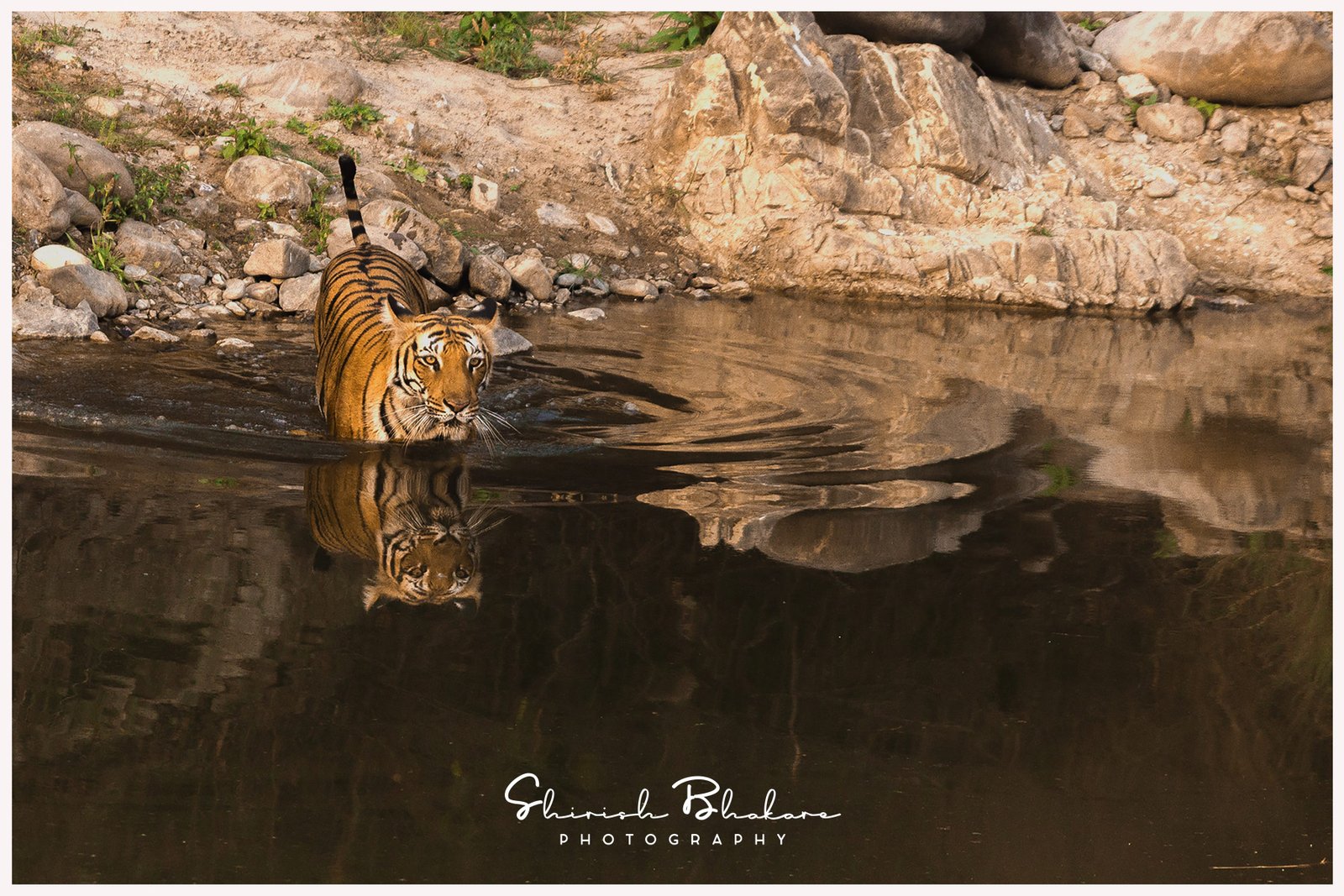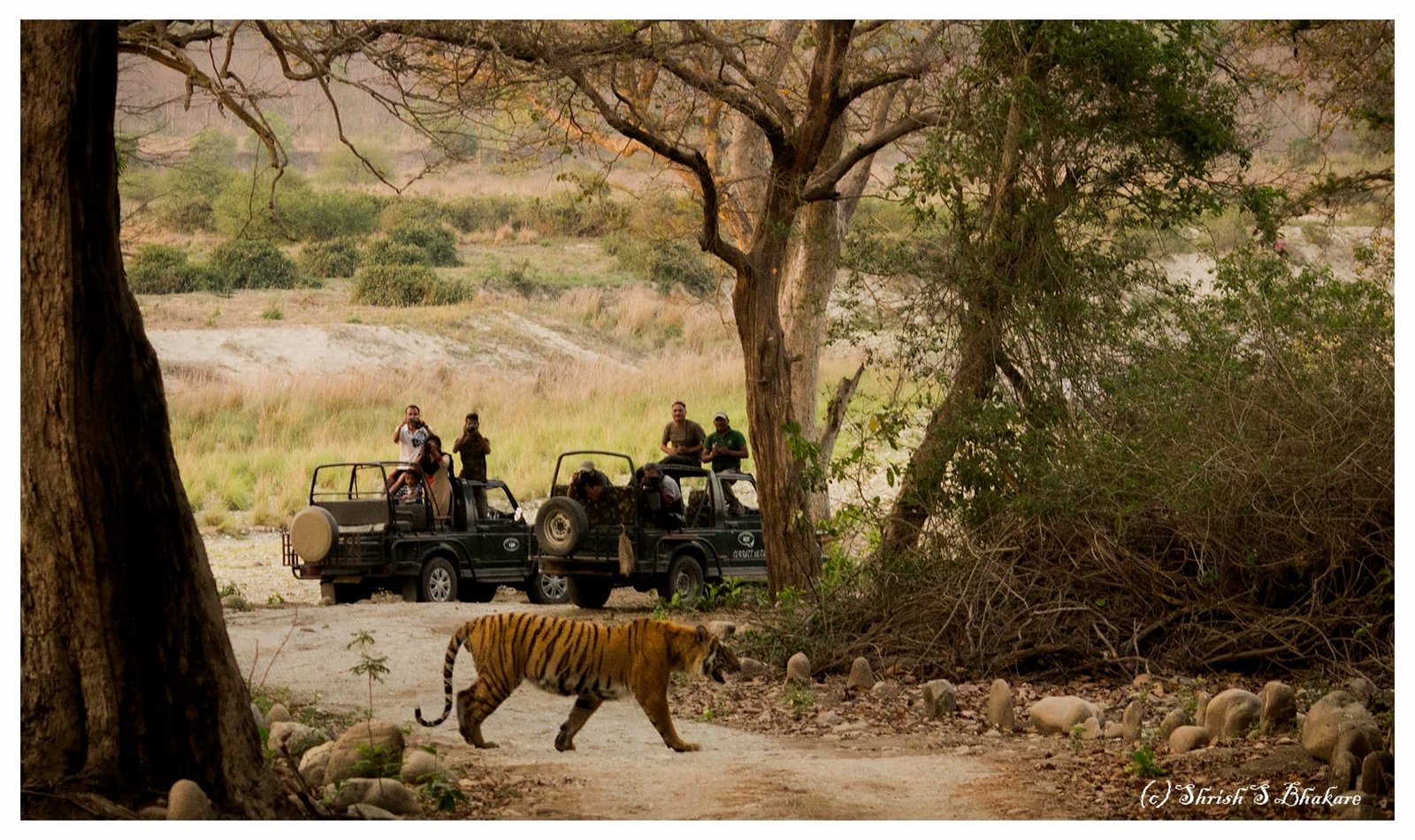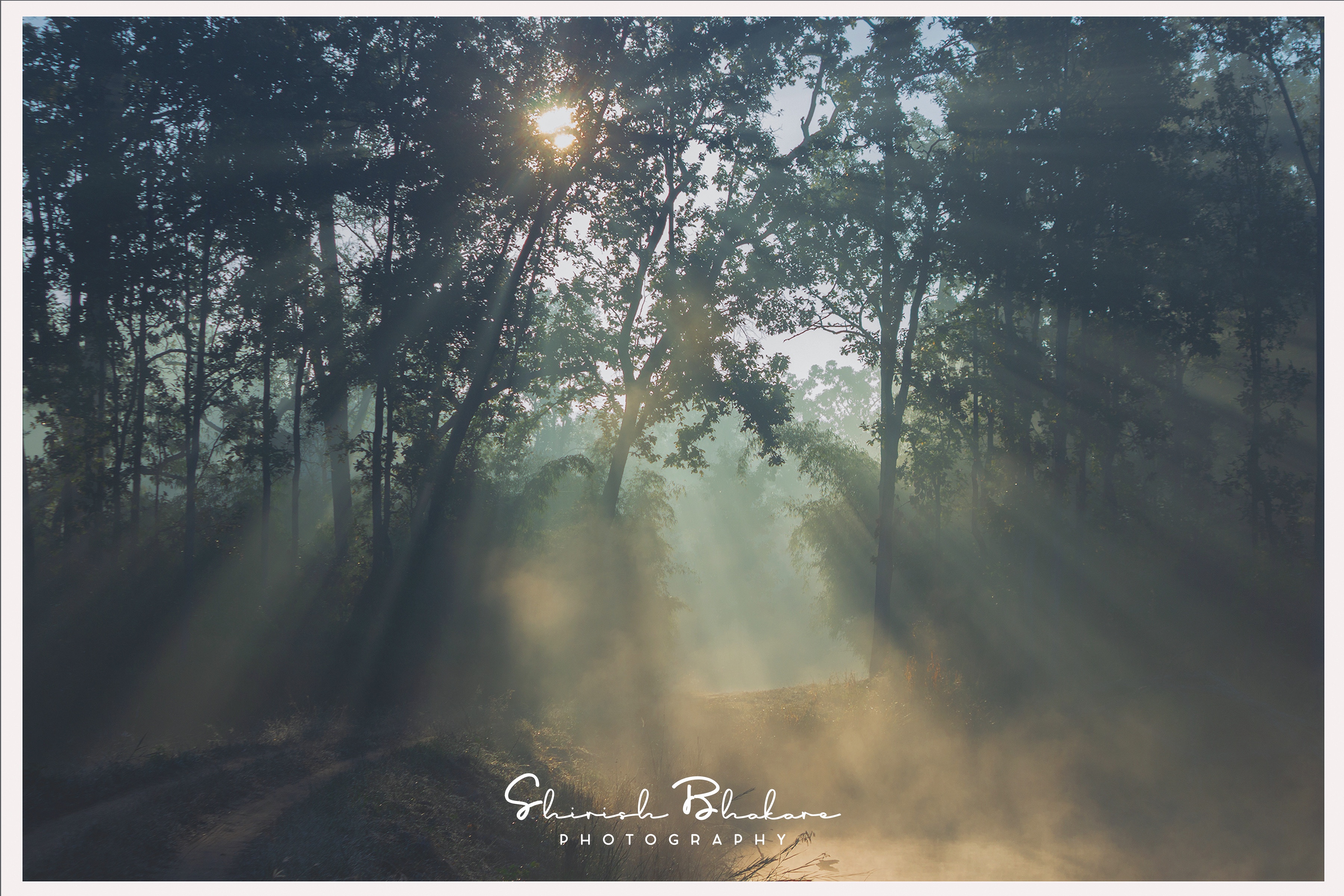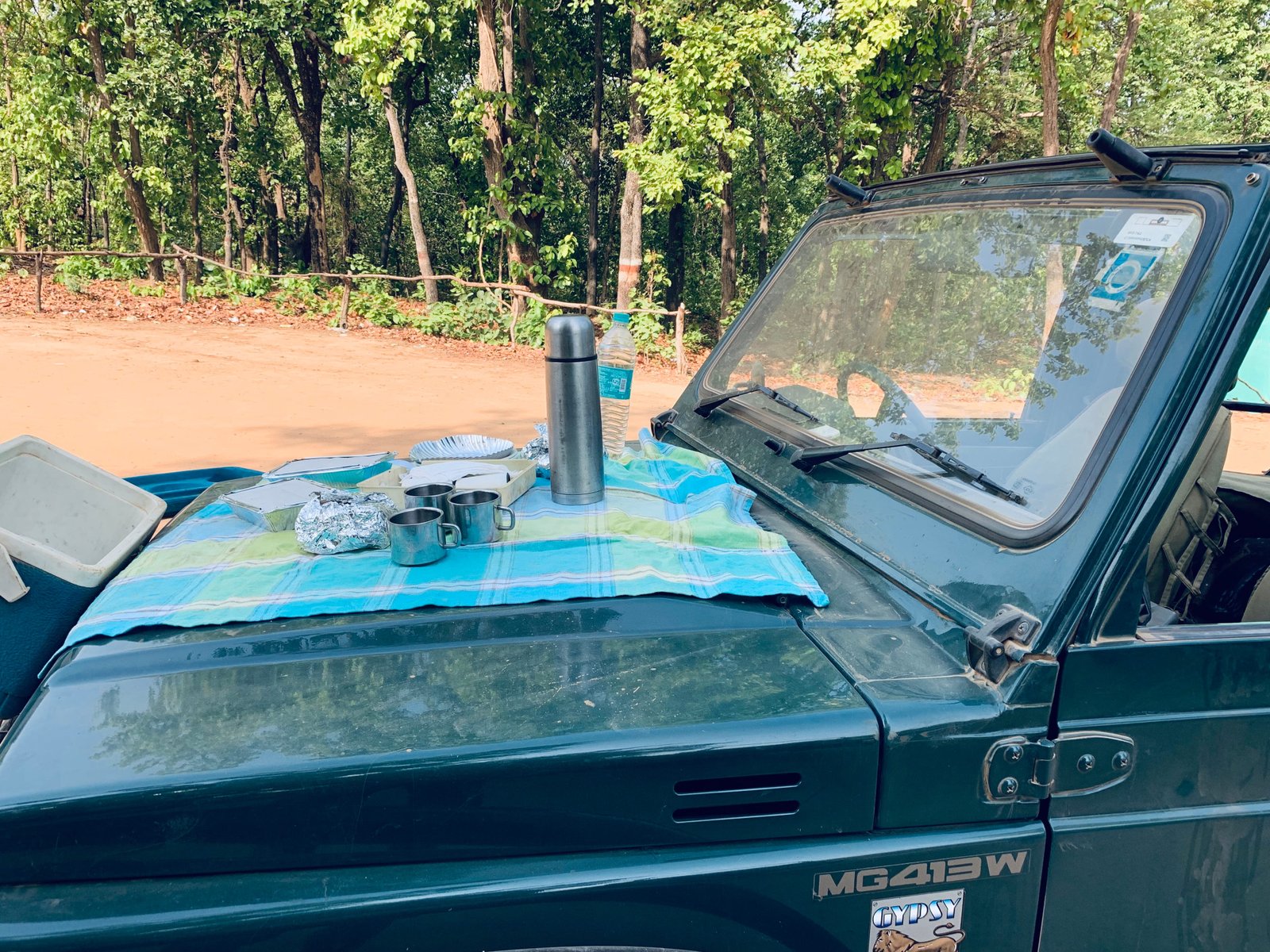Let me start by saying, ”I am not a wildlife photographer, I am only a nature lover who enjoys tracking Tigers”.
A few days ago it was World Photographers Day. It struck me that maybe I should write a blog on the same, So here I am. I have seen people getting amused when I tell them I do wildlife photography as a hobby and I go to the forest where Sherkhan rules. The best part is most of them think that the images are captured are under controlled conditions. So I write this blog to shed light on challenges of wildlife photography especially shooting tigers in wild.
 I enjoy tracking tigers and observing them.
I enjoy tracking tigers and observing them.
Challenges in clicking tigers while tracking them in the wild has two aspects one is internal and other is external. Let us talk about internal factors first. Internal factors are the one that is limited to the photographer's physical and mental makeup. Tiger tracking is physically straining and mentally testing task. I have been pretty regular to forests across India and believe me it is not an easy life. I am sure my wildlife fraternity would agree to what I am going to describe next.
To start off the day starts as early as 4 am. During jungle excursion, you sit in a four-wheel drive for at least 4 hours at stretch only to be driven on the roads, where no roads exist. You are doing off-road all the time. This drive happens at-least twice a day, so imagine the beating your body gets. Don’t forget the weight of the gears we carry for photography. It weighs nothing less than 10-15% of our own body weight.
 Photography gear is pretty heavy. Thank god, I’m the only hobbyist. 😃
Photography gear is pretty heavy. Thank god, I’m the only hobbyist. 😃
Best part or should I say the worst part is that the vehicle is the open roof. This means you are continuously exposed to elements of nature. Winter chills, summer heat and at times thundering rains. Dust and dirt aplenty, you get layered in it. I have many times sat in the scorching sun for hours to click one image. During an excursion at Corbett, we waited and waited for three hours for a tiger to cross the road. We got a window of maybe 3 seconds. During another jungle safari, we waited for a tigress for two hours. Trust me the feeling is overwhelming when you get that shot.


Another example, Kanha National park in December 2018. The wind chill is a super freezer. So much so we wear 4 layers of winter clothing to protect ourselves. Yet for a moment when I pulled out gloves to click images my fingers, I had frostbite kind of feeling. I could hardly press the shutter button and my hands were jammed. It can be so harsh that the dewdrops create a layer of ice on grass blades thanks to lower condensation temperature. So mental strength is must along with physical strength to do wildlife photography for a long time.
You must have realized by now Patience is the biggest virtue on the field. I have bet my money on safari to see a particular tiger and did not get even one image of my subject.
 Patiently waiting for tiger… syncing in with nature.
Patiently waiting for tiger… syncing in with nature.
Now let us look at critical external factors that are involved in tracking tigers:
1. Tiger behaviour: Every animal has a unique response to a given situation, you need to understand that first. Plus tigers are territorial creatures of habit, so if you know about particular tiger whom you are tracking it can be easier to find them. Trust me when I say it works, it is only when luck is smiling on you.
 Male tiger walking on the road. We spotted him multiple time because our guide knew his behaviour very well.
Male tiger walking on the road. We spotted him multiple time because our guide knew his behaviour very well.2. Prey behaviour: In the presence of a tiger, all prey animal feel anxiety, for fear of death. In such situations prey animals like deer’s, monkey and peacocks vocalize unique sounds. This alerts the entire forest about the presence of a predator in that area. You should be able to read these sounds and also the body language of prey animals.
 Gaurs are largest bovines in the world. With calves around, they are one of the most prized hunts of a tiger. They are very alert to the presence of tigers.
Gaurs are largest bovines in the world. With calves around, they are one of the most prized hunts of a tiger. They are very alert to the presence of tigers.
3. Topography: Geographical structure like the layout of mountains, gorges, meadows, lakes, rivers, nullah etc has an impact on tiger movement. Tigers prefer a place with a lot of prey and water. Tigers love water. In peak summers, Water bodies are must lookout if you want to see a tiger.

So as you must have realized Tracking tiger needs physical strength and mental stamina as basic hygiene condition. Further knowing the natural history of the animal, behavioural pattern and geography of place come in handy. Yet in spite of knowing everything and planning it to minutest details, you might not get to see a tiger.
On the lighter side, when exhausted and tired you realize, the best sleep you get is on the rear seat of a Gypsy while you are breathing purest air.

Who cares, about taste, when you can have relaxed breakfast in the wild bush.

Who cares, when you know the anxiety and excitement to see the animal is more than slipped discs of the back and cervical issues. Who cares, this unpredictability is what photographers live for.
It is similar to the adventure we call life. We plan to execute and we still might fail. All you gotta do is try again. Life is about moving on amidst all setbacks, like not seeing tiger yet enjoying the ride. Ride called life.
P.S: Just in- case you want to attend natures call and tiger sighting is on the card, trust it will test your mettle.

Excellent Article Shirish , Your Passion is great !